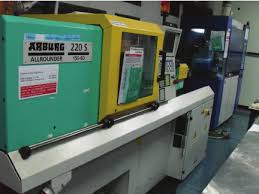Molding machines have become the backbone of various industries, led buld injection molding revolutionizing manufacturing processes and enabling the mass production of complex and precise components. From automotive parts to household items, molding machines play a critical role in producing a wide range of products efficiently and cost-effectively. This article delves into the history, types, and applications of molding machines, highlighting their significance in contemporary manufacturing.
Historical Background
The concept of molding dates back to ancient civilizations, where materials like clay and wax were shaped using rudimentary molds. Apan, the advent of molding machines in the industrial era marked a significant leap in manufacturing technology. The first injection molding machine was patented by John Wesley Hyatt in 1872, primarily to produce billiard balls from celluloid, an early type of plastic. This invention laid the foundation for modern molding techniques.
As the demand for plastic products grew in the 20th century, so did the development of molding machines. The introduction of new materials, such as Bakelite in the early 1900s, further propelled the industry’s growth. Post-World War II, advancements in materials science and automation led to the development of more sophisticated and efficient molding machines, paving the way for the modern manufacturing landscape.
Types of Molding Machines
Molding machines can be broadly categorized based on their molding process. The most common types include:
- Injection Molding Machines: These machines are used to produce complex plastic parts with high precision. The process involves melting plastic pellets and injecting them into a mold cavity under high pressure. Once the plastic cools and solidifies, the mold opens, and the finished part is ejected. Injection molding is widely used in the automotive, electronics, and consumer goods industries.
- Blow Molding Machines: These machines are designed to produce hollow plastic parts, such as bottles and containers. The process involves heating a plastic preform and then inflating it within a mold cavity to form the desired shape. Blow molding is commonly used in the packaging industry.
- Compression Molding Machines: This process involves placing a pre-measured amount of material into an open mold cavity, which is then closed and subjected to heat and pressure. Compression molding is suitable for producing large, intricate parts and is often used in the automotive and aerospace industries.

